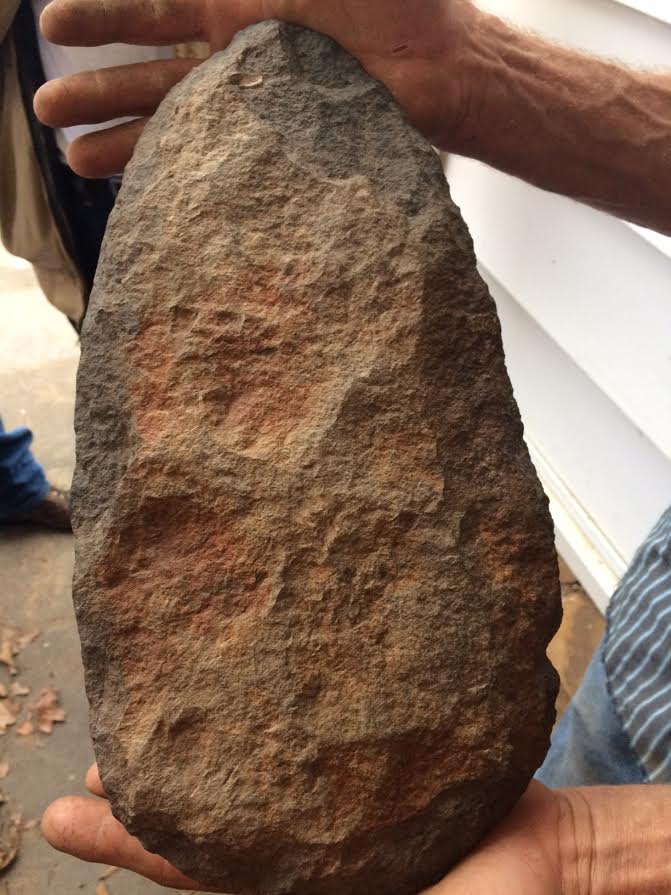By Dr. Curtis Varnell
My neighbor sauntered over to my backyard. “Got something to show you,” he exclaimed, a satisfied look on his face. I could tell by the excitement in his voice that he had something that he knew would excite me. He wasn’t wrong! In his hands was the biggest arrow-head shaped object I had ever seen. Measuring at least a foot and a half long and half that wide, it was composed of hand-worked flint and probably weighed fifty pounds. I was astounded and hooked. I had picked up my share of arrowheads and pieces of pottery but had never, ever seen anything in comparison. I whistled, “Where did you get that Paul? I knew I wasn’t going to get a positive answer and I was right. “Down near the river in the bottoms,” he smirked, knowing I was dying for an answer he was unwilling to reveal.
I get to check out a lot of historical items and this was one of the most interesting ever. I am certainly no expert on native archeology but my friend, former U/A professor George Sabo is and, after examination, he determined the stone was one of the largest plow points ever found. We still don’t know exactly where it was found but it was local to the River Valley.

My wife and her family are avid arrowhead and artifact hunters. Like most families, we have a number of points that were found locally and the story behind each find. When settlers first arrived in the region, there were three major tribes found in Arkansas, the Caddo, Quapaw, and the Osage. All hunted the river valley but none were exactly predominant in the region, a fact that lead to the Cherokee settling along the Arkansas river in the early 1800’s. Prior to that time, natives were more than likely a group called the Mississippian and were probably decimated by disease brought to America by explorers. From the number of mounds and artifacts, it is obvious that large numbers of natives occupied the region.
Some of the best artifacts came from the Carden Bottoms near Dardanelle and Danville. Excavations there indicated a thriving population and thousands of artifacts have been found including spear and arrow points, decorated pottery, grindstones, and burial sites. Many of them have been excavated and destroyed over the years but many artifacts can still be enjoyed at the U/A archeology center and various museums.
I really enjoy rock art left by natives. There are many sites around; one of the best is on the soft cliff face near the old Spanish Mine on the Mulberry River. I take teachers yearly to study and enjoy the thousand-year-old images drawn on the rock and to have Mr. Jones show them the grindstones and artifacts that he has collected nearby. Rock Cave on Petite Jean mountain is another public site but I have also located many others in the caves along Seven-hollow trail and elsewhere. Friends, thinking I am the native expert I am not, have taken me to other sites north of Clarksville and in the caves of the Boston Mountain. I am astonished at the numbers and quality of the artwork and it always excites me to visit.
Scattered around the region are also mounds built as ceremonial and burial sites for the Indians. I think I lived near one at Paris, having once discovered a leather bag containing several of what we called Indian marbles. Perfectly smooth and as large as an egg, the white rock was painted a deep, dark red in color. It now resides, along with other artifacts, in the Logan County Museum.
There is just so much history to be enjoyed in our region. From Native American art to settlers to those who have traveled through and visited, we are rich in stories and culture. Write down the history of your ancestors, find out about the artifacts they own, and preserve the stories of our existence.






